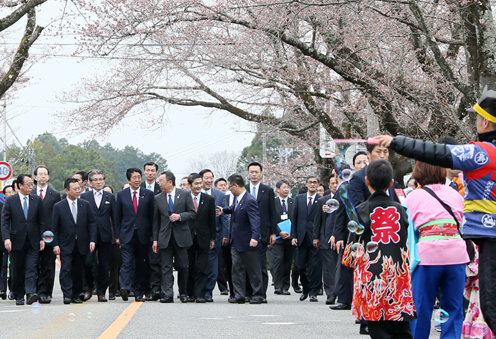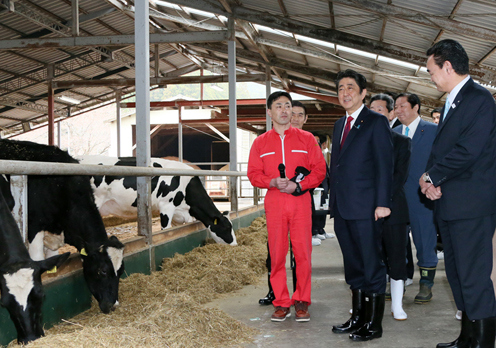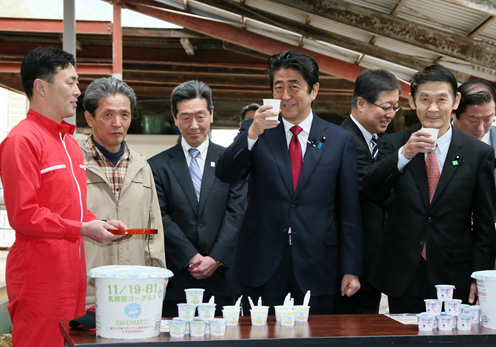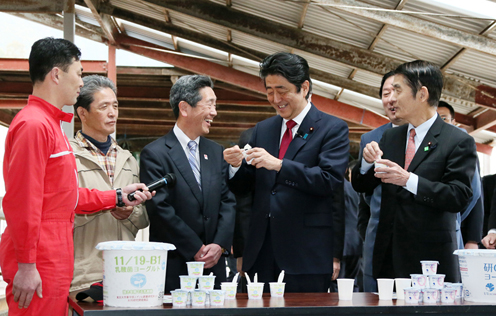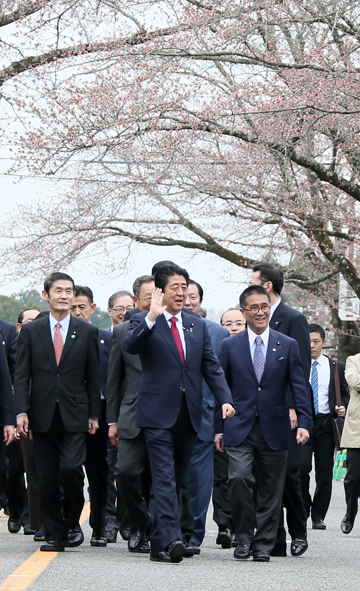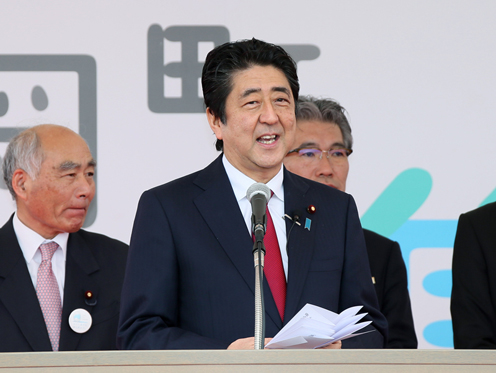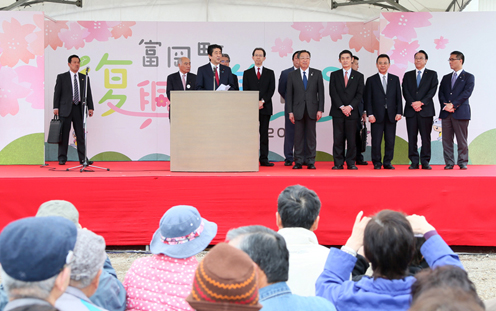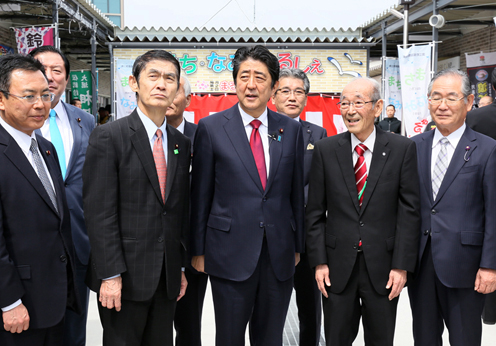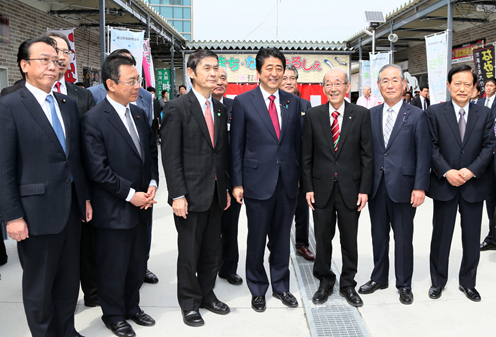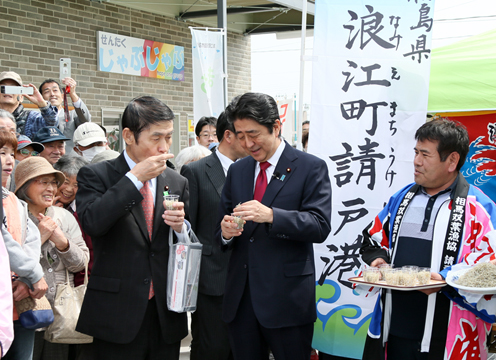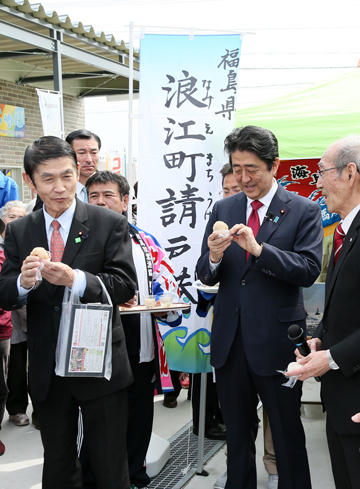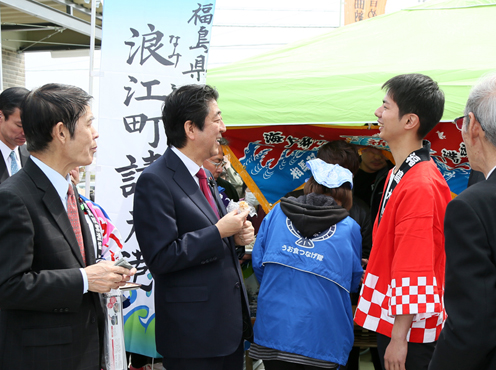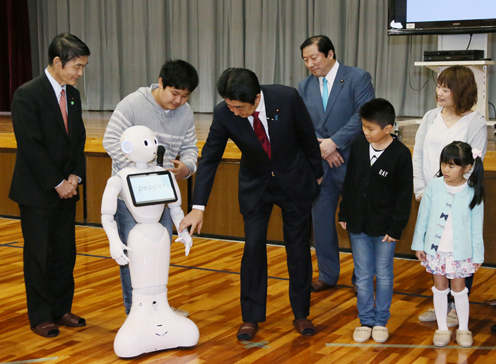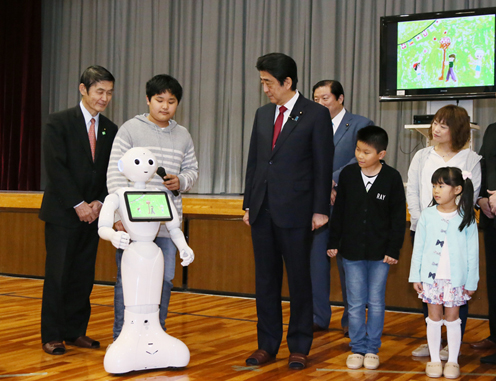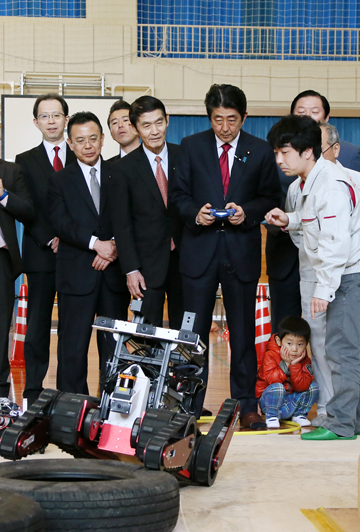Home > News > The Prime Minister in Action > April 2017 > Visit to Fukushima Prefecture
The Prime Minister in Action
Visit to Fukushima Prefecture
April 8, 2017
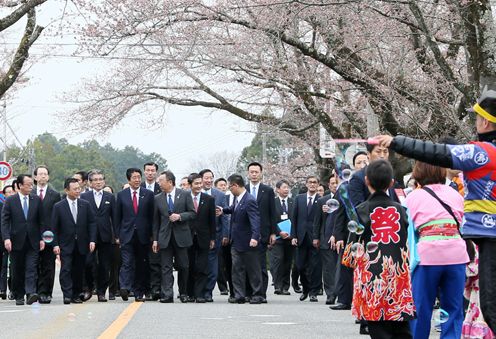
Photograph of the Prime Minister walking by rows of cherry trees (1)
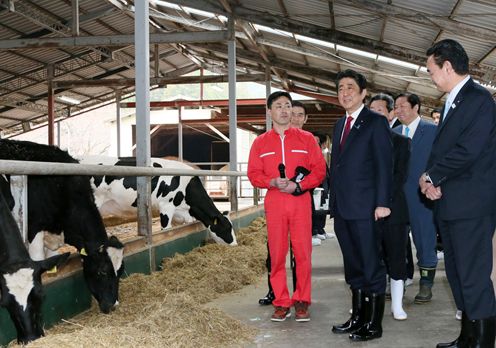
Photograph of the Prime Minister receiving an explanation on animal breeding at a livestock farm
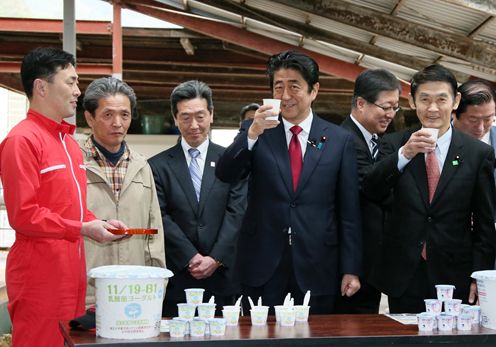
Photograph of the Prime Minister sampling dairy products at a livestock farm (1)
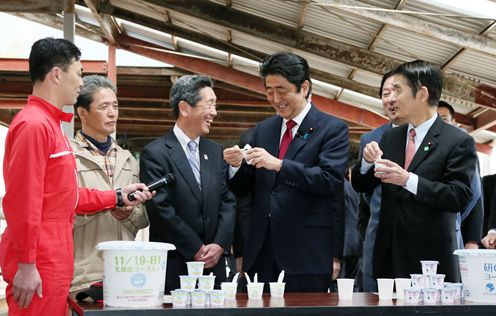
Photograph of the Prime Minister sampling dairy products at a livestock farm (2)
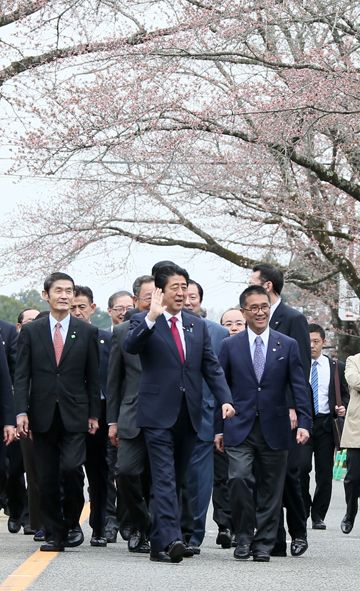
Photograph of the Prime Minister walking by rows of cherry trees (2)
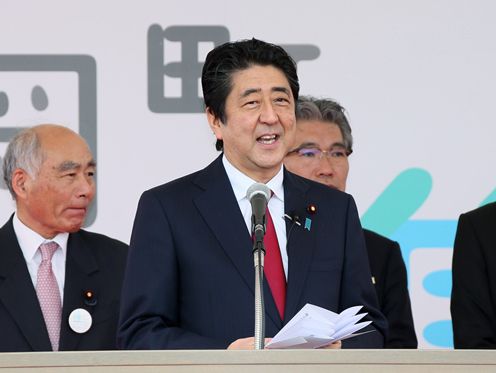
Photograph of the Prime Minister delivering an address at the “Reconstruction Gathering” (1)
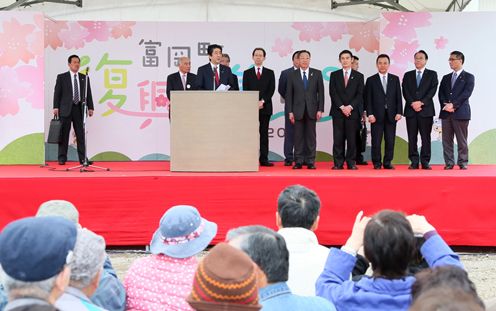
Photograph of the Prime Minister delivering an address at the “Reconstruction Gathering” (2)
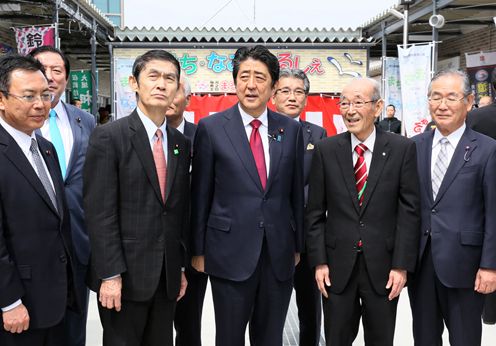
Photograph of the Prime Minister receiving an explanation at the shopping area (1)
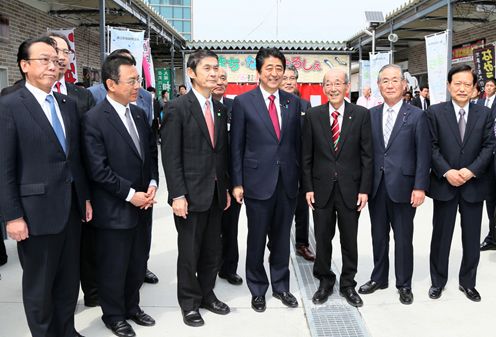
Photograph of the Prime Minister receiving an explanation at the shopping area (2)
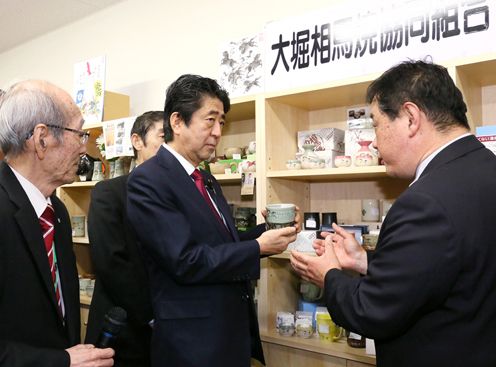
Photograph of the Prime Minister conversing with an individual in the Obori-soma-yaki ceramics business
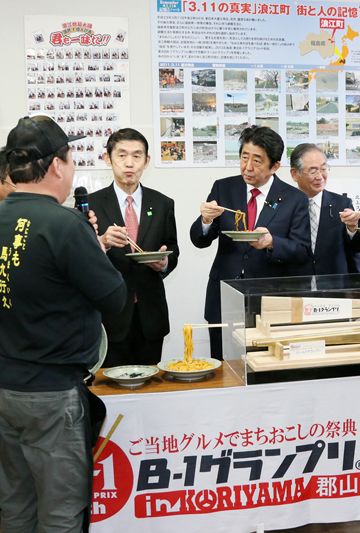
Photograph of the Prime Minister sampling food at the shopping area (1)
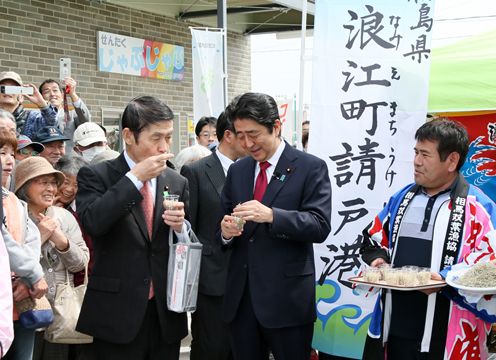
Photograph of the Prime Minister sampling food at the shopping area (2)

Photograph of the Prime Minister sampling food at the shopping area (3)
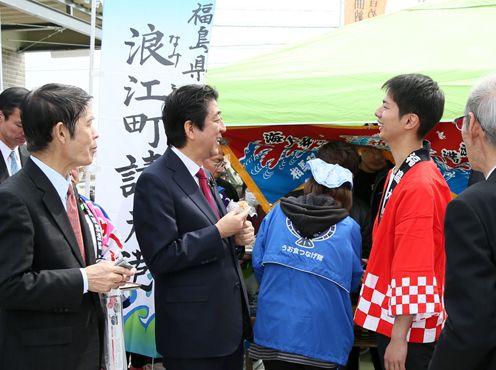
Photograph of the Prime Minister sampling food at the shopping area (4)

Photograph of the Prime Minister receiving an explanation at the robot and drone class (1)
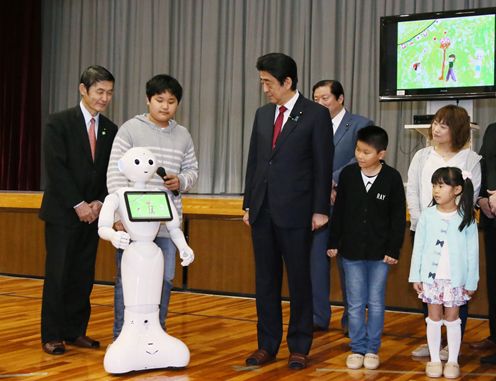
Photograph of the Prime Minister receiving an explanation at the robot and drone class (2)

Photograph of the Prime Minister operating a drone at the robot and drone class
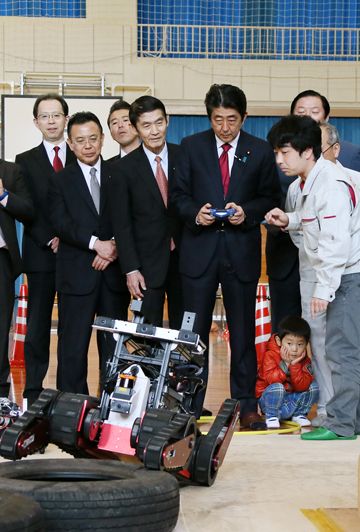
Photograph of the Prime Minister operating a robot at the robot and drone class
[Provisional Translation]
Prime Minister Shinzo Abe visited Fukushima Prefecture.
The Prime Minister visited a livestock farm in Naraha Town, Futaba District, Fukushima Prefecture. The Prime Minister then attended the "Reconstruction Gathering" in Tomioka Town, Futaba District and said in his address,
"I am delighted that the 'Reconstruction Gathering 2017' in Tomioka Town is being held today on such a grand scale. I want to express my heartfelt respect for the hard work that everyone involved has put in to realize today's gathering.
It has been six years since the Great East Japan Earthquake and the accident at Tokyo Electric Power Company (TEPCO) Fukushima Daiichi Nuclear Power Station. At last evacuation orders have been lifted in Tomioka Town, too, with the exception of difficult-to-return-zones. This is the first step toward full-fledged reconstruction.
It is now possible to walk through Yonomori for cherry blossom viewing. What was taken for granted in the past has become possible again for the first time in seven years. I am overjoyed. While no more than about 30% of the blossoms are in bloom still, I hope that by this evening a few more will have blossomed.
Today, I was able to walk to this point with the Mayor. I really wish that I could walk along the rows of cherry trees out to the end. I believe this is also the true wish of the people of Tomioka. We will pool our efforts to make the people's wish come true as soon as possible. The Government will work with everyone here to further accelerate reconstruction. I want to conclude my remarks with the promise that we will exert every effort for reconstruction so that the people of Tomioka can again feel glad that they were born here and they live here. Congratulations on this splendid gathering today."
Subsequently, the Prime Minister visited a shopping area in Namie Town, Futaba District, and conversed with an Obori-soma-yaki ceramics business. Afterwards, the Prime Minister visited a robot and drone class in Minamisoma City.
After his visit, the Prime Minister said,
"In Fukushima Prefecture, on April 1, almost all of the areas where evacuation orders were issued due to the nuclear accident saw those orders lifted, with the exception of difficult-to-return-zones. I was able to hear about how people have moved forward one step at a time, working hard to overcome various difficulties through today.
Raw milk shipments have started again in Naraha, and in Tomioka, the restoration of the rows of cherry trees was being celebrated. In Namie, shopping areas are beginning to regain their vitality. Children are the future of reconstruction. Here in the Odaka area of Minamisoma, the elementary school has reopened, and children were learning how to operate drones and robots.
In 2020, a portion of events related to an international robotics competition will be held here in Minamisoma. I want to make it so that robots become synonymous with Minamisoma.
We will continue to work to achieve the reconstruction of Fukushima and the reconstruction of Tohoku by making maximum efforts towards securing housing, 'nariwai,' or occupations and livelihoods that sustain people's daily lives, town development, and psychological care, while paying close attention to those affected by the disaster."
In addition, the Prime Minister said the following about the way forward for support efforts.
"The lives of many people were greatly affected and changed by the nuclear accident in Fukushima. The Government will collaborate with people in local municipalities, including Fukushima Prefecture, to offer support tailored to the situation of each person. In difficult-to-return-zones, we will also steadily move forward in a step-wise fashion with efforts from reconstruction hubs. Concerning the issue of the statements made by Minister Imamura, the minister has already apologized, and I also want to offer my sincere apology as well.
We will continue to move forward with reconstruction while paying close attention to the feelings of the people of Fukushima and those affected by the disaster. This policy of the Abe Cabinet has not changed at all. There can be no revitalization of Tohoku without the reconstruction of Fukushima. Furthermore, there can be no revitalization of Japan without the reconstruction of Tohoku. The Government will continue to exert every effort for reconstruction under that basic policy."

